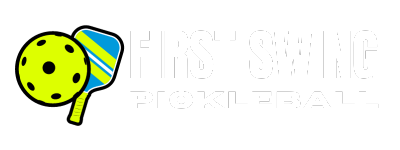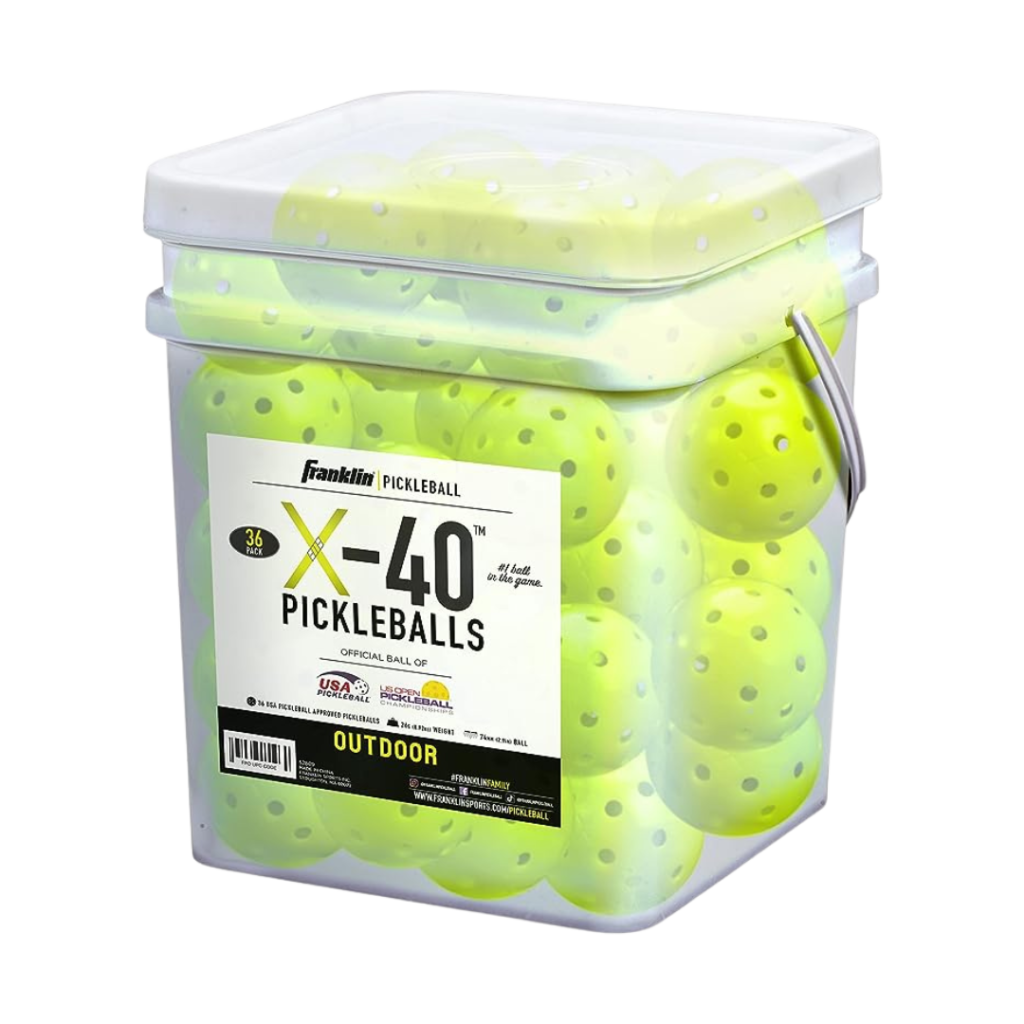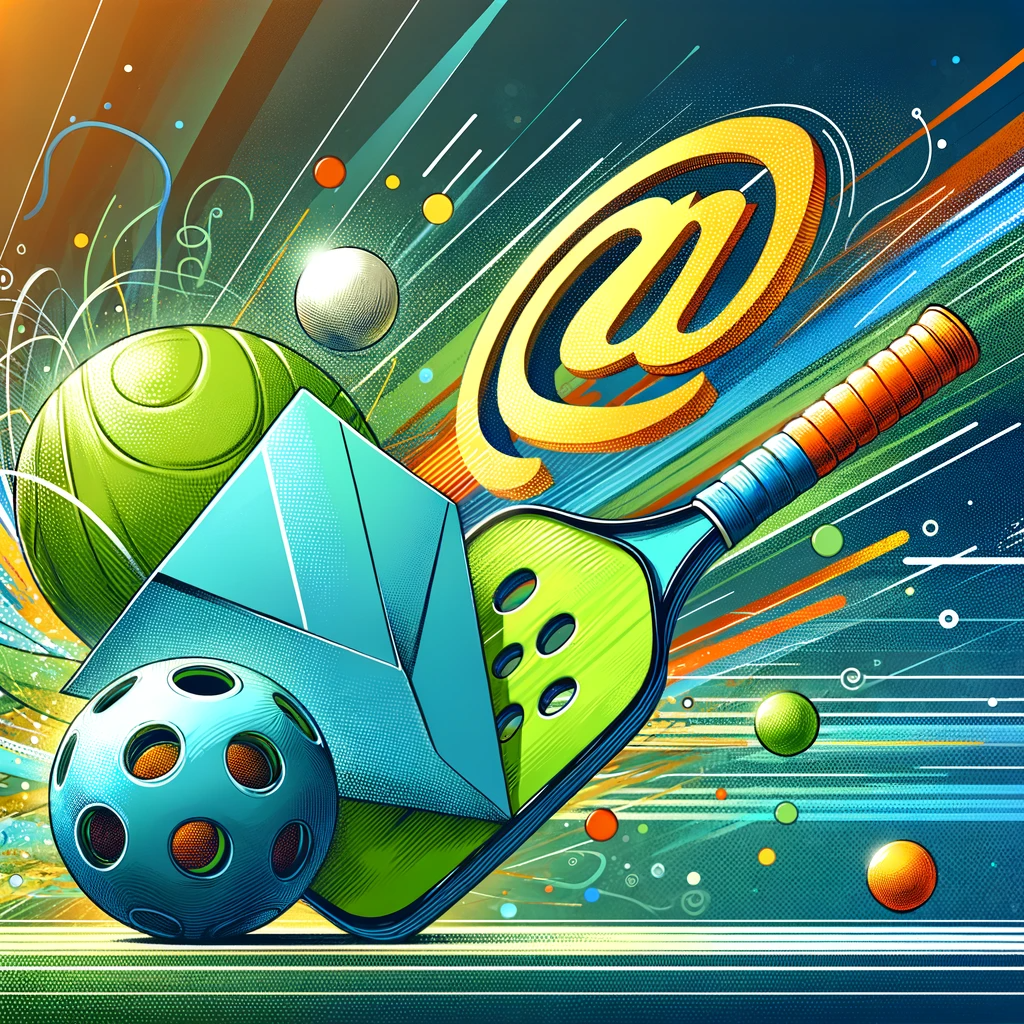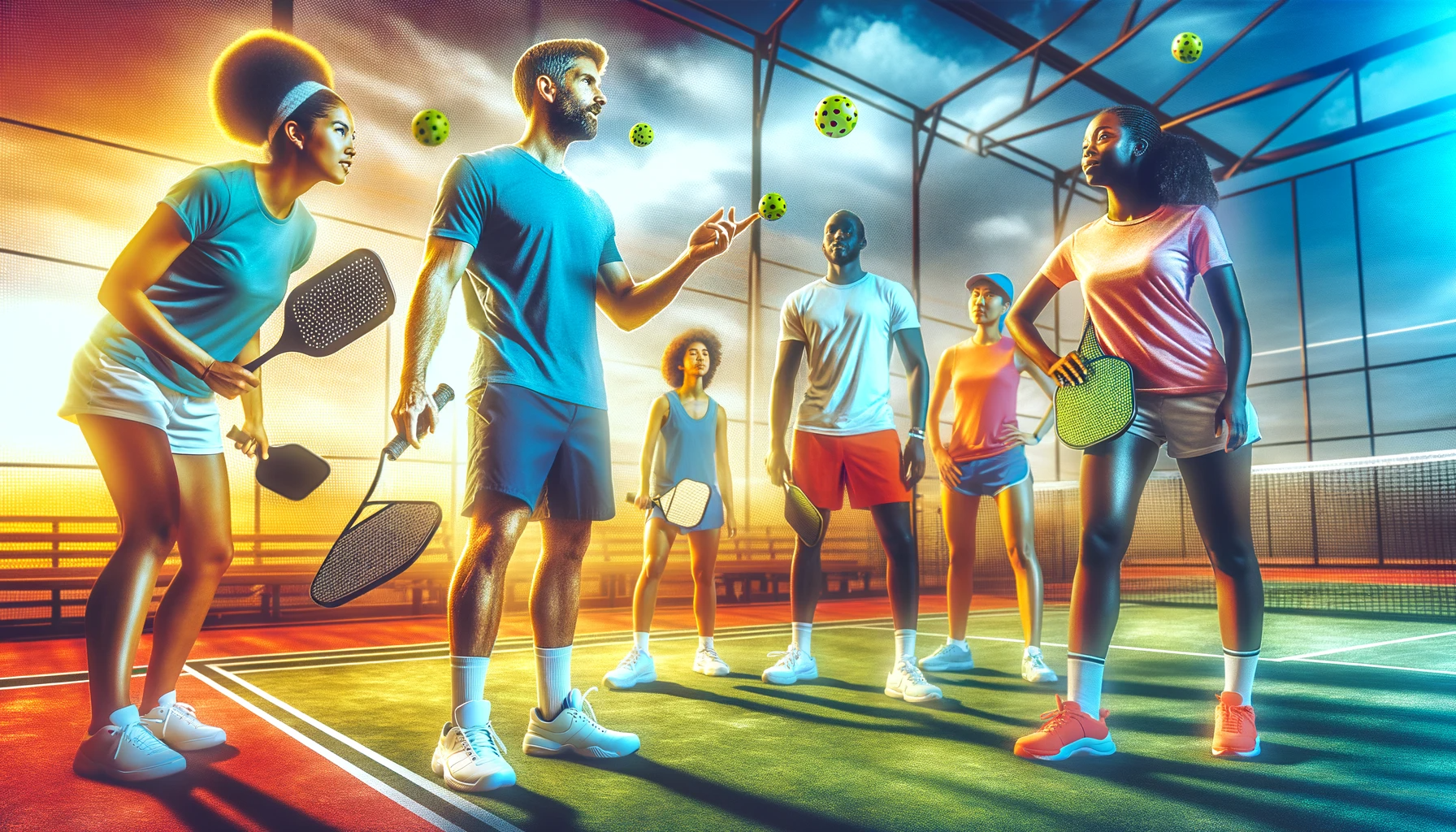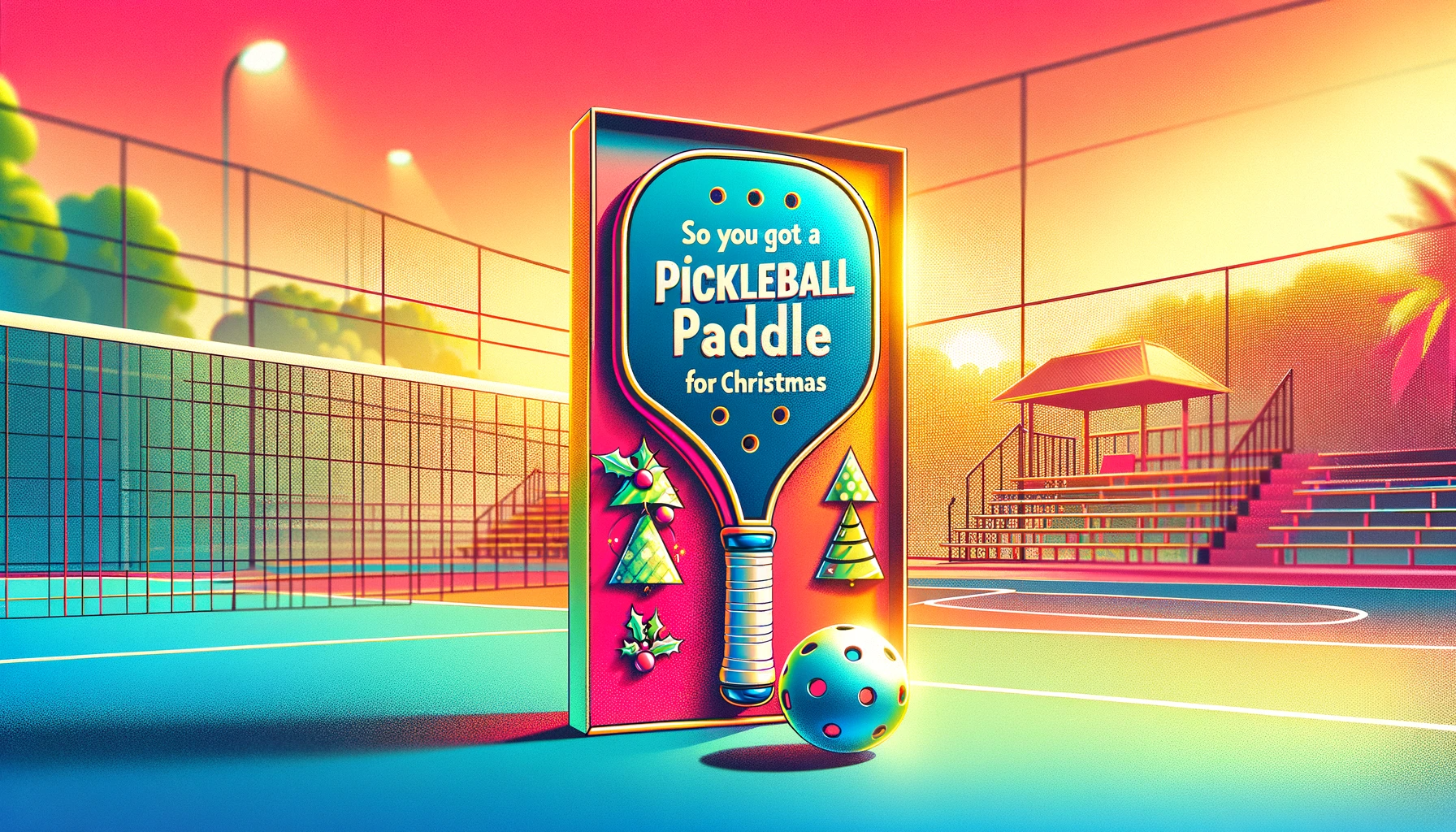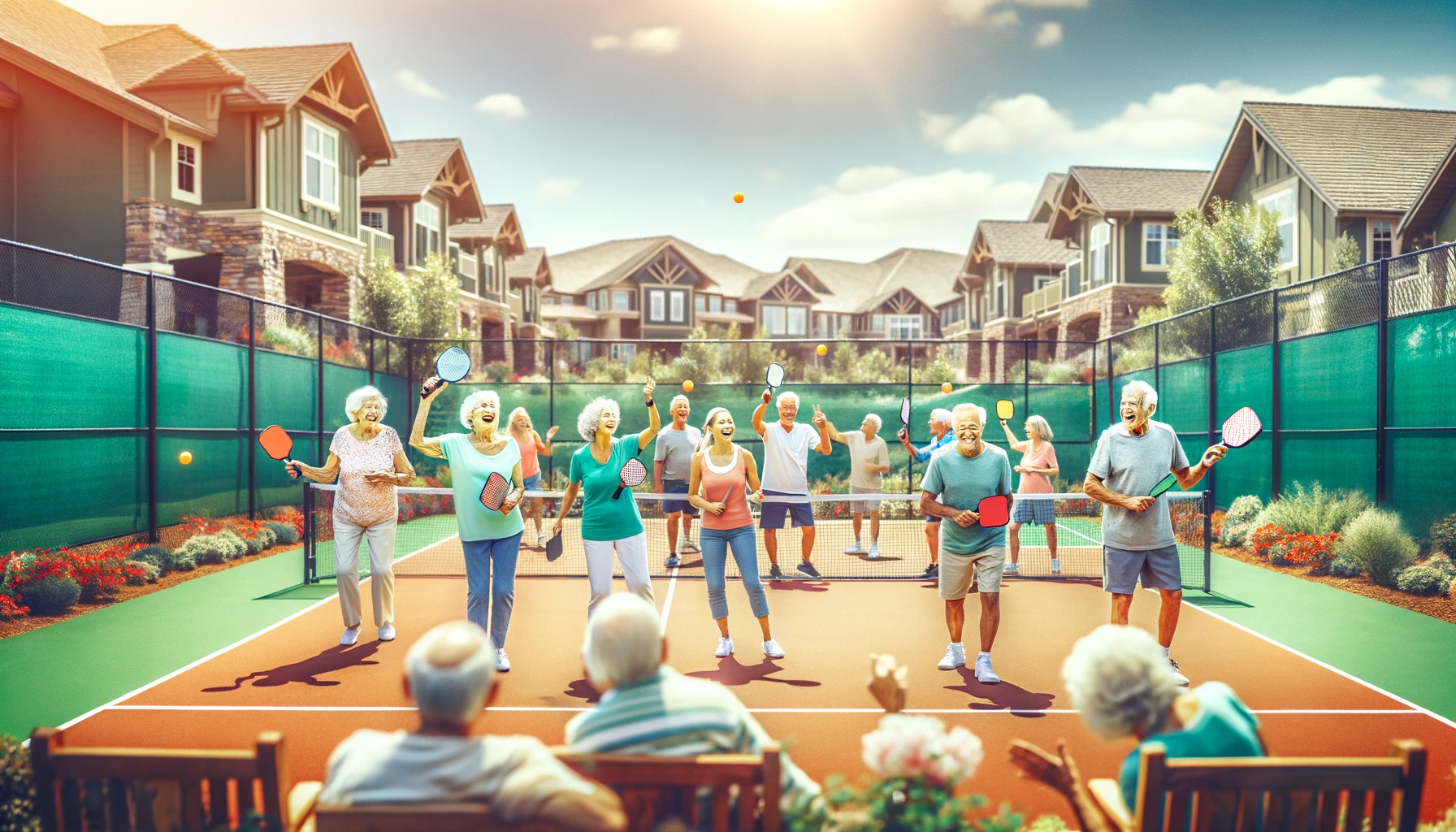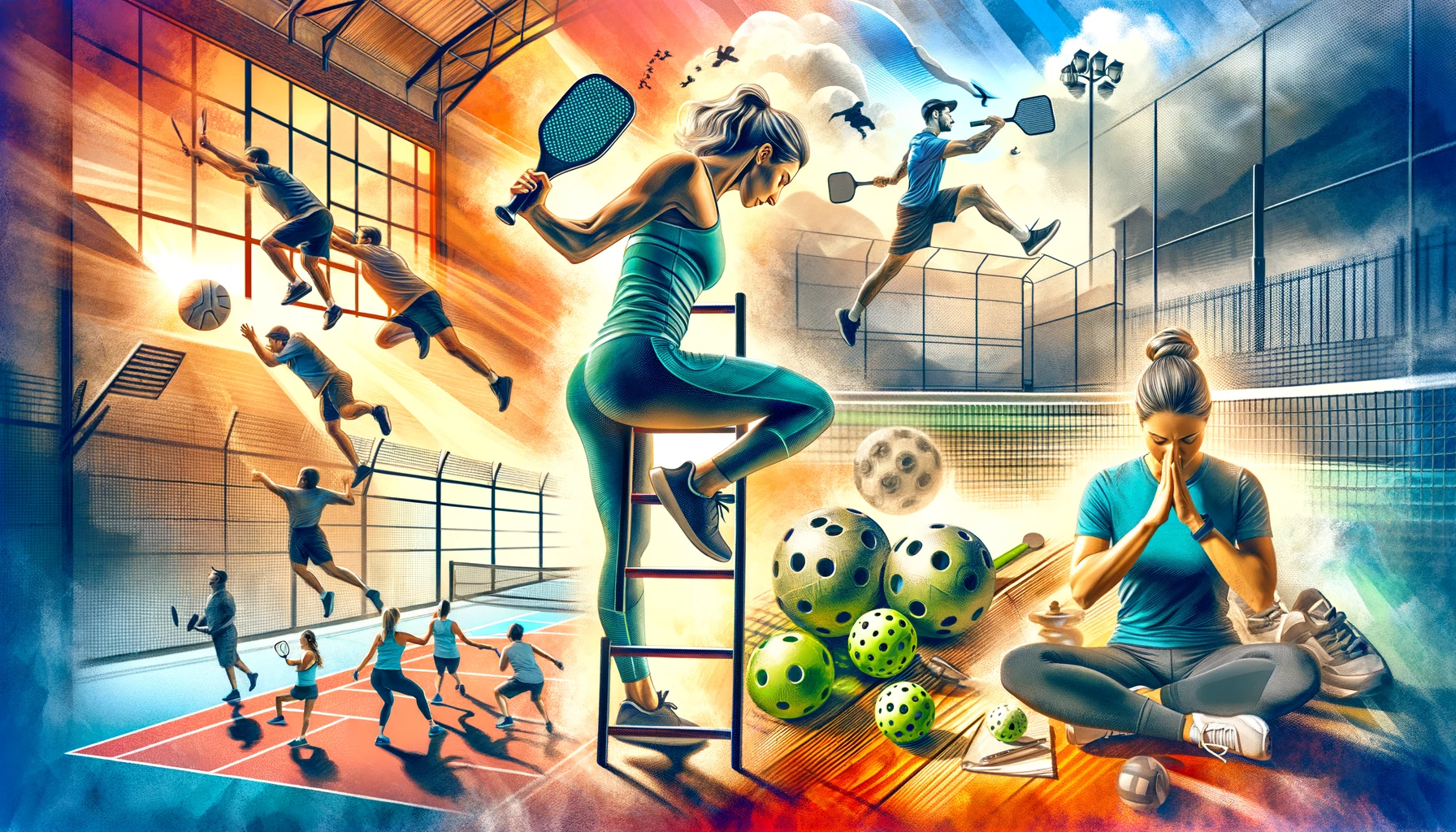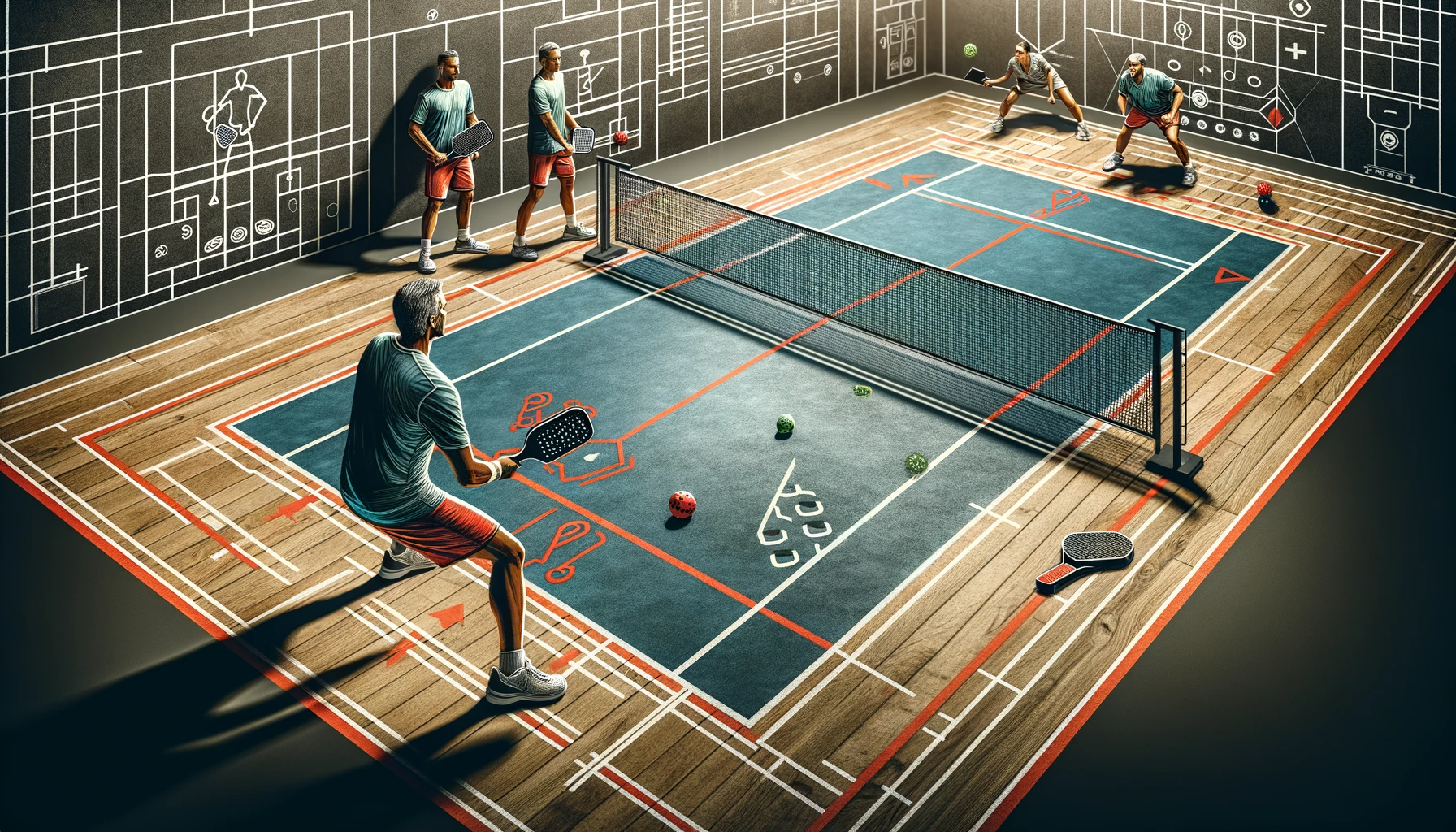
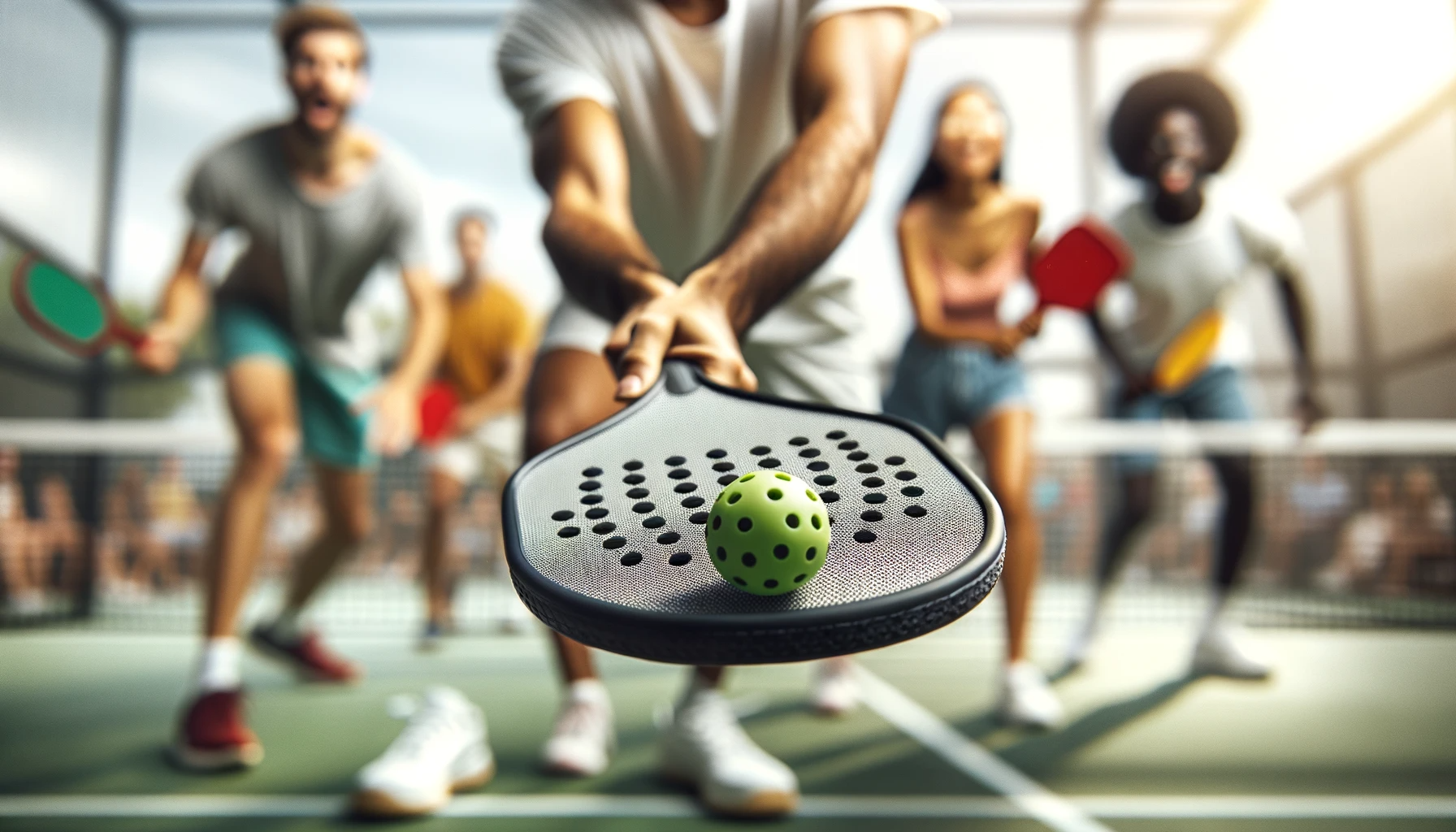
Common Pickleball Injuries and How to Avoid Them
While pickleballl is a low-impact activity, like any sport, there is always a risk of injury. Common pickleball injuries can range from minor sprains and strains to more serious issues such as fractures and tendonitis. However, with proper precautions and techniques, these injuries can be avoided. In this article, we will discuss some of the most common pickleball injuries and provide tips on how to prevent them, allowing players to enjoy the game safely and without interruption.
Top 5 Most Common Pickleball Injuries
1. Ankle Sprains
Ankle sprains are one of the most common injuries in pickleball. This occurs when the ligaments in the ankle are stretched or torn due to a sudden twist or turn. This can happen when you are running, jumping, or changing direction quickly on the court.
To prevent ankle sprains, it's important to wear proper footwear. Pickleball shoes should have good ankle support and a non-slip sole. It's also essential to warm up before playing and to stretch your ankles and calves. If you have a history of ankle sprains, consider wearing an ankle brace for extra support.
2. Tennis Elbow
Tennis elbow, also known as lateral epicondylitis, is a common injury in pickleball. It's caused by overuse of the muscles and tendons in the forearm, leading to pain and inflammation on the outside of the elbow. This injury can be aggravated by repetitive motions such as swinging the paddle or hitting the ball.
To prevent tennis elbow, it's crucial to have proper form and technique when playing pickleball. Make sure to use your entire arm and not just your wrist when hitting the ball. It's also essential to take breaks and rest your arm if you start to feel any pain or discomfort. Strengthening exercises for the forearm muscles can also help prevent this injury.
3. Shoulder Injuries
Shoulder injuries are common in pickleball, especially among older players. These injuries can range from mild strains to more severe rotator cuff tears. They can be caused by repetitive overhead motions, such as serving or smashing the ball.
To prevent shoulder injuries, it's important to warm up and stretch your shoulders before playing. It's also crucial to use proper form and technique when serving and hitting overhead shots. If you start to feel any pain or discomfort in your shoulder, take a break and rest. Strengthening exercises for the shoulder muscles can also help prevent injuries.
4. Knee Injuries
Knee injuries can occur in pickleball due to the quick and sudden movements on the court. These injuries can range from minor strains to more severe ligament tears. They can be caused by twisting, turning, or landing awkwardly on the knee.
To prevent knee injuries, it's important to wear proper footwear with good support and traction. It's also crucial to warm up and stretch your knees before playing. If you have a history of knee injuries, consider wearing a knee brace for extra support. Strengthening exercises for the muscles around the knee can also help prevent injuries.
5. Dehydration and Heat Exhaustion
Pickleball is a physically demanding sport, and players can easily become dehydrated or suffer from heat exhaustion. This can happen when playing in hot and humid weather or not drinking enough water during breaks.
To prevent dehydration and heat exhaustion, it's essential to stay hydrated by drinking plenty of water before, during, and after playing. It's also crucial to take breaks and rest in a shaded area if you start to feel overheated. Wearing light and breathable clothing can also help regulate your body temperature.
Tips for Avoiding Pickleball Injuries
One of the most common injuries in pickleball is a sprained ankle. This can happen when players are moving quickly and suddenly change direction, causing their ankle to twist. To avoid this injury, it is important to wear proper footwear with good ankle support. Sneakers or court shoes with a non-slip sole are recommended for pickleball. It is also important to warm up and stretch before playing to loosen up your muscles and prevent any sudden movements that could lead to a sprain.
Another common injury in pickleball is a strained or pulled muscle. This can happen when players are not properly warmed up or when they overexert themselves during a game. To avoid this, it is important to listen to your body and not push yourself too hard. Take breaks when needed and make sure to stretch before and after playing. It is also important to maintain good form and technique while playing to avoid putting unnecessary strain on your muscles.
Shoulder injuries are also common in pickleball, especially for players who are new to the sport. This is because pickleball involves a lot of overhead shots, which can put strain on the shoulder joint. To avoid this, it is important to strengthen your shoulder muscles through exercises and stretches. It is also important to use proper technique when hitting overhead shots, using your entire body to generate power rather than just your arm.
Another injury that can occur in pickleball is tennis elbow, also known as lateral epicondylitis. This is an overuse injury that causes pain and inflammation in the tendons of the elbow. It can be caused by repetitive motions, such as hitting the ball with a paddle. To avoid this injury, it is important to use proper technique and not rely solely on your arm for power. It is also important to take breaks and rest your arm if you start to feel any pain or discomfort.
In addition to these common injuries, pickleball players may also experience blisters on their hands from gripping the paddle too tightly or from using a paddle that is not the right size for their hand. To avoid blisters, it is important to use a paddle that is the correct size for your hand and to loosen your grip on the paddle. You can also use gloves or grip tape to protect your hands from blisters.
Lastly, it is important to stay hydrated while playing pickleball. Dehydration can lead to muscle cramps and fatigue, increasing the risk of injury. Make sure to drink plenty of water before, during, and after playing to keep your body properly hydrated.
Warm-Up and Cool-Down Techniques
A proper warm-up should consist of dynamic stretches and movements that mimic the actions you will be performing during the game. This will help increase blood flow to your muscles, making them more pliable and less prone to injury. Some good warm-up exercises for pickleball include arm circles, leg swings, and lunges. You can also incorporate some light jogging or jumping jacks to get your heart rate up.
Another important aspect of a warm-up is to focus on the muscles and joints that are most commonly used in pickleball. These include your shoulders, elbows, wrists, and ankles. Take some time to stretch and loosen up these areas before starting your game. This will not only help prevent injuries but also improve your performance on the court.
In addition to a proper warm-up, it's equally important to cool down after playing pickleball. This will help your body recover and prevent any delayed onset muscle soreness (DOMS). Cooling down should consist of static stretches that target the muscles you used during the game. Hold each stretch for 15-30 seconds and remember to breathe deeply. This will help relax your muscles and reduce any tension or tightness.
One of the most common injuries in pickleball is a shoulder injury. This is because the overhead serve and overhead shots put a lot of strain on the shoulder joint. To prevent shoulder injuries, it's important to warm up your shoulders properly and also incorporate some shoulder strengthening exercises into your regular workout routine. This will help improve the stability and strength of your shoulder joint, making it less prone to injury.
Another common injury in pickleball is tennis elbow, also known as lateral epicondylitis. This is an overuse injury that occurs when the tendons in your elbow become inflamed. To avoid this injury, it's important to warm up your wrists and elbows before playing. You can also use a wrist brace or compression sleeve to provide support and reduce strain on your tendons.
Lastly, it's crucial to listen to your body and take breaks when needed. If you start to feel any pain or discomfort during a game, it's important to stop and rest. Pushing through the pain can lead to more serious injuries. It's also important to stay hydrated and fuel your body with proper nutrition before and after playing pickleball.
The Importance of Proper Footwear in Preventing Pickleball Injuries
First and foremost, let's talk about the importance of wearing the right footwear when playing pickleball. Many people make the mistake of wearing their regular sneakers or running shoes when playing pickleball. While these shoes may be comfortable for everyday wear, they are not designed for the specific movements and demands of pickleball.
Pickleball involves a lot of lateral movements, quick changes in direction, and sudden stops. Regular sneakers or running shoes do not provide the necessary support and stability for these types of movements. This can increase the risk of ankle sprains, knee injuries, and other common pickleball injuries.
So, what type of footwear should you wear when playing pickleball? The best option is to invest in a pair of pickleball-specific shoes. These shoes are designed with the sport in mind and have features that can help prevent injuries. They typically have a wider sole for better stability, a reinforced toe box for protection, and a non-marking sole for indoor play.
Another important factor to consider when choosing pickleball shoes is the fit. Your shoes should fit snugly but not too tight. If your shoes are too loose, your feet will slide around inside, increasing the risk of blisters and other foot injuries. On the other hand, if your shoes are too tight, they can restrict movement and cause discomfort.
It's also essential to choose shoes with good arch support. Pickleball involves a lot of jumping and quick movements, which can put a lot of strain on your feet. Shoes with proper arch support can help distribute the weight and reduce the risk of foot injuries.
Now that we've discussed the importance of proper footwear let's take a look at some common pickleball injuries and how they can be prevented with the right shoes.
Ankle sprains are one of the most common injuries in pickleball. They occur when the ankle twists or rolls, causing damage to the ligaments. This type of injury can be prevented by wearing shoes with good ankle support. Pickleball shoes typically have a higher cut around the ankle, providing stability and preventing it from rolling.
Knee injuries are also prevalent in pickleball, especially among older players. The constant stopping and starting, as well as the lateral movements, can put a lot of strain on the knees. Wearing shoes with good cushioning can help absorb the impact and reduce the strain on your knees.
Blisters are another common pickleball injury, especially for players who are just starting. They occur when there is friction between your foot and the shoe, causing a painful blister to form. To prevent blisters, make sure your shoes fit properly and have enough cushioning to reduce friction.
Avoiding Overuse Injuries
One of the most common injuries in pickleball is tennis elbow, also known as lateral epicondylitis. This injury occurs when the tendons in your elbow become inflamed due to overuse. It's a painful condition that can significantly impact your ability to play pickleball. So, how can you avoid it? The key is to listen to your body.
If you start to feel pain or discomfort in your elbow while playing pickleball, it's important to take a break and rest. Continuing to play through the pain will only make the injury worse. You can also try using an elbow brace or strap to provide support and alleviate some of the pressure on your tendons. Additionally, make sure to warm up properly before playing and stretch your arm muscles to prevent strain.
Another common injury in pickleball is rotator cuff tendinitis. This occurs when the tendons in your shoulder become inflamed due to repetitive overhead motions, such as serving or smashing. To avoid this injury, it's crucial to listen to your body and pay attention to any warning signs. If you start to feel pain or discomfort in your shoulder, take a break and rest. You can also try using ice or heat therapy to reduce inflammation and promote healing.
In addition to overuse injuries, pickleball players are also at risk for acute injuries, such as sprains and strains. These injuries can occur from sudden movements or collisions with other players. While it's impossible to completely prevent these types of injuries, you can reduce your risk by listening to your body and being aware of your surroundings. If you feel like you're pushing yourself too hard or if you're in a crowded area on the court, it's important to slow down and be more cautious.
One of the best ways to avoid injuries in pickleball is to maintain good overall physical fitness. This means incorporating strength and flexibility training into your routine. Strong muscles and joints are less prone to injury, and flexibility can help prevent strains and sprains. Additionally, make sure to warm up properly before playing and cool down afterwards. This will help prepare your body for the physical demands of pickleball and prevent muscle soreness.
It's also important to listen to your body outside of the pickleball court. If you're feeling fatigued or sore, it's okay to take a break and rest. Pushing yourself too hard can lead to overuse injuries. Make sure to get enough sleep and proper nutrition to support your body's recovery and repair processes.
Lastly, it's crucial to listen to your body when it comes to your technique. Proper form and technique can help prevent injuries and improve your performance. If you're unsure about your technique, consider taking a lesson from a certified pickleball instructor. They can provide valuable feedback and help you make adjustments to prevent injuries.
Strengthening Exercises and Techniques
One of the most common injuries in pickleball is shoulder pain. This can be caused by the repetitive overhead motions involved in serving and hitting the ball. To prevent shoulder pain, it is important to strengthen the muscles in your shoulders and upper back. One exercise that can help with this is the shoulder external rotation. To do this exercise, stand with your arms at your sides and a resistance band in each hand. Keeping your elbows close to your sides, rotate your arms outward, away from your body. Repeat this motion for 10-15 reps, and gradually increase the resistance as you get stronger.
Another common injury in pickleball is tennis elbow, also known as lateral epicondylitis. This is caused by the repetitive motion of hitting the ball with a paddle, which can strain the tendons in your elbow. To prevent this injury, it is important to strengthen the muscles in your forearm. One exercise that can help with this is the wrist curl. Sit in a chair with your forearm resting on a table, palm facing up. Hold a light weight in your hand and slowly curl your wrist upward, then back down. Repeat this motion for 10-15 reps, and gradually increase the weight as you get stronger.
In addition to strengthening exercises, it is also important to incorporate stretching into your pickleball routine. Stretching can help improve your flexibility and range of motion, reducing the risk of injuries. One stretch that can be beneficial for pickleball players is the shoulder cross-body stretch. Stand with your feet shoulder-width apart and your arms at your sides. Bring one arm across your body, using your other arm to gently pull it closer to your chest. Hold this stretch for 15-20 seconds, then switch arms.
Another important aspect of injury-proofing your pickleball game is proper technique. Many injuries can be prevented by using the correct form and mechanics when hitting the ball. For example, when serving, it is important to use your entire body to generate power, rather than just your arm. This can help prevent strain on your shoulder and elbow. Additionally, make sure to use a proper grip on your paddle to avoid wrist injuries.
It is also important to listen to your body and take breaks when needed. Overuse injuries can occur when players push themselves too hard without giving their bodies time to rest and recover. If you start to feel pain or discomfort, take a break and allow your body to heal before getting back on the court.
Lastly, it is crucial to warm up before playing pickleball. This can help prepare your muscles for the physical demands of the game and reduce the risk of injury. A simple warm-up routine can include jogging in place, arm circles, and lunges. It is also important to cool down and stretch after playing to prevent muscle soreness and stiffness.
The Role of Proper Technique in Preventing Pickleball Injuries
One of the most common injuries in pickleball is shoulder pain. This can be caused by overuse of the shoulder joint, especially during serves and overhead shots. To avoid this, it's important to use proper technique when hitting the ball. Make sure to use your entire body to generate power, rather than just relying on your arm. This will help distribute the force and prevent strain on your shoulder.
Another common injury is tennis elbow, also known as lateral epicondylitis. This is caused by repetitive stress on the tendons in the elbow, which can be aggravated by the repetitive motions in pickleball. To prevent this, it's important to use proper grip and wrist action when hitting the ball. Avoid gripping the paddle too tightly and try to use your wrist to generate power, rather than your arm.
Knee injuries are also common in pickleball, especially among older players. This can be caused by sudden stops and changes in direction, as well as the repetitive nature of the game. To avoid knee injuries, it's important to warm up properly before playing and to wear supportive shoes that provide good traction. It's also important to use proper footwork and avoid sudden movements that can put strain on your knees.
Proper technique is also crucial in preventing ankle injuries. Ankle sprains are common in pickleball, especially when players are moving quickly and changing direction. To avoid this, it's important to use proper footwork and to wear supportive shoes. It's also important to pay attention to the court surface and avoid playing on uneven or slippery surfaces.
In addition to these physical injuries, pickleball can also cause strain on the eyes. The fast-paced nature of the game and the small size of the ball can make it difficult to track, leading to eye strain and fatigue. To prevent this, it's important to take breaks and rest your eyes periodically. It's also a good idea to wear sunglasses with UV protection to reduce glare and strain on your eyes.
Aside from using proper technique, there are other ways to prevent injuries in pickleball. One of the most important things is to listen to your body. If you feel pain or discomfort, take a break and rest. Pushing through the pain can lead to more serious injuries. It's also important to stay hydrated and to stretch before and after playing to prevent muscle strains.
Another important factor in preventing injuries is to use the right equipment. Make sure to use a paddle that is the right size and weight for your body and playing style. Using a paddle that is too heavy or too light can put strain on your muscles and joints. It's also important to use a ball that is appropriate for your skill level. Using a ball that is too hard or too soft can also increase the risk of injury.
Pickleball Safety
One of the most common injuries in pickleball is a sprained ankle. This can happen when a player lands awkwardly after jumping to hit a shot or when they step on the ball. To avoid this, it is important to wear proper footwear with good ankle support. Sneakers or court shoes are recommended, as they provide the necessary grip and stability on the court. Avoid playing in sandals or flip flops, as they can increase the risk of ankle injuries.
Another common injury in pickleball is a strained or pulled muscle. This can happen when a player overexerts themselves, especially if they are not properly warmed up. To prevent this, it is important to stretch before and after playing. Focus on stretching your arms, shoulders, legs, and back, as these are the areas most commonly used in pickleball. Additionally, start your game with a few minutes of light jogging or jumping jacks to get your blood flowing and muscles warmed up.
One of the most serious injuries in pickleball is a concussion. This can occur when a player gets hit in the head with a ball or racket. To avoid this, it is important to always be aware of your surroundings and keep your eye on the ball at all times. If you are playing with a group, make sure to communicate with your teammates to avoid collisions. If you do get hit in the head, take a break and seek medical attention if necessary.
Another injury that can occur in pickleball is tennis elbow, also known as lateral epicondylitis. This is an overuse injury that causes pain and tenderness on the outside of the elbow. It can be caused by repeatedly hitting the ball with improper form or using a racket that is too heavy. To prevent this, make sure to use proper form when hitting the ball and take breaks if you start to feel any pain in your elbow. It is also important to use a racket that is the right weight and size for your strength and skill level.
In addition to these common injuries, there are also some general safety tips that can help prevent accidents on the pickleball court. First and foremost, always make sure to warm up and stretch before playing. This will help prevent muscle strains and other injuries. It is also important to stay hydrated and take breaks when needed. Dehydration and fatigue can increase the risk of injuries.
Another important safety tip is to always use proper equipment. This includes wearing appropriate footwear, using a racket that is the right size and weight for you, and wearing protective gear such as knee pads or elbow pads if needed. It is also important to regularly check your equipment for any signs of wear and tear, and replace them if necessary.
Lastly, communication is key in preventing injuries on the pickleball court. Make sure to communicate with your teammates and opponents to avoid collisions and accidents. If you are playing with someone new, take the time to discuss any potential safety concerns and establish ground rules before starting the game.
